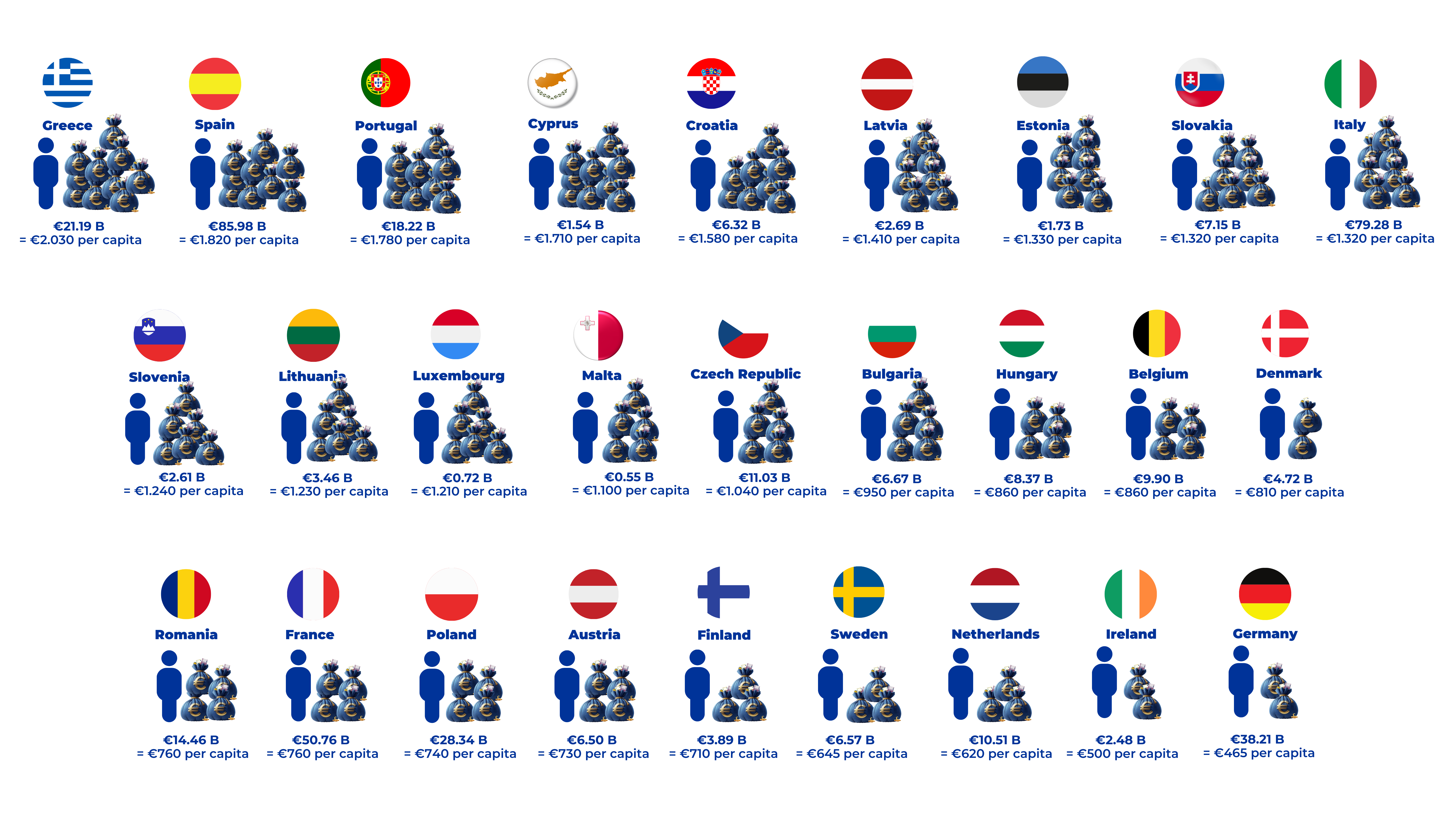Your tax money takes two paths:
► funding the public sector - straight to government institutions, every euro
tracked;
► and funding the private sector ... now that's where your money takes some interesting detours.
Funding the public sector
€435.01 Billion
Diligent but Slow
Public sector funding is supporting government institutions, national agencies, and international organizations. It’s slow, bureaucratic, and meticulously tracked — every euro accounted for by armies of auditors. This is the norm for 25 out of 27 EU member states.
18.005 public bodies and institutions from EU-27 contracted €435.01 B (Source: FTS 2014-2023)
Government Bodies = €51.47 billion -> Direct funding for infrastructure, research, and public services — everything your government promised but couldn’t afford until EU stepped in.
Member States and National Agencies = €378.28 billion -> The lion’s share flows through national governments to local projects. Think roads, schools, hospitals — but also a lot of paperwork.
International Organizations & EU Departments = €5.24 billion -> Funding for global initiatives — because the EU loves to think globally while acting locally. A small portion goes back to EC departments.
Funding the private sector
€116.38 Billion
Speedy but Shadowy
The funding of the Private sector is where things get interesting. Crucial for innovation and economic growth, money flow through NGOs, NFPOs, and businesses. It’s fast-moving and less transparent, often with minimal verification required. They are the playground for OLAF and EPPO.
67.065 "private companies" from EU-27 contracted €116.38 B (Source: FTS 2014-2023)
NGOs & NFPOs = €57.45 billion -> Non-Governmental and Not-for-Profit Organizations receive significant funding for advocacy, humanitarian efforts, and research projects. They rarely disclose detailed financial reports, leaving room for creative accounting.
Real Private Companies = €58.93 billion -> The largest share of private sector funding goes to actual businesses — some thriving on EU contracts, others struggling to compete in an opaque system.
A. Between 48% and 92% on public sector projects
25 out of 27 EU member states allocate the majority of their EU funds to public sector initiatives.
Roads, schools, hospitals — things citizens can actually see and use.
This is the norm. It’s responsible. It’s transparent.
This visual represents the EU funding each country contracted for the public sector from 2014 to 2023 (source EU FTS),
alongside the approximate per capita allocation, calculated using the mean population during the same period:

B. Between 7% and 70% on private sector funding
2 out of 27 EU member states allocate the majority of their EU funds to private sector initiatives.
This visual represents the EU funding each country contracted for the PRIVATE sector from 2014 to 2023 (source: FTS):

C. Between 6% and 87% from the total Private sector funding on NGOs and NFPOs
This is a deep view into how much NGOs and NFPOs get, per capita. Remember their main objectives:
advocacy, humanitarian efforts, and research projects.
A total of €57.45 billion
This visual represents the EU funding each country contracted for NGOs & NFPOs from 2014 to 2023 (source EU FTS), approximated per capita allocation, calculated using the mean population during the same period:

EU funding is a lifeline for innovation and development, but its dual paths — transparent public sector spending and shadowy private sector allocations — demand a closer look. As citizens, we must ask: are these funds truly improving our lives, or are they disappearing into bureaucratic oblivion?
The EU dream can only thrive if we protect its integrity — by ensuring every euro is tracked, audited, and spent responsibly.



